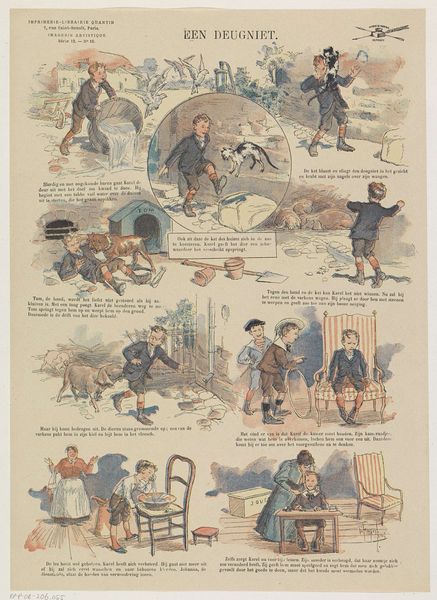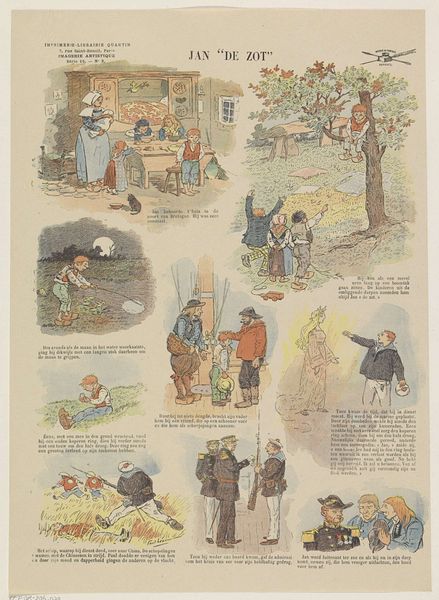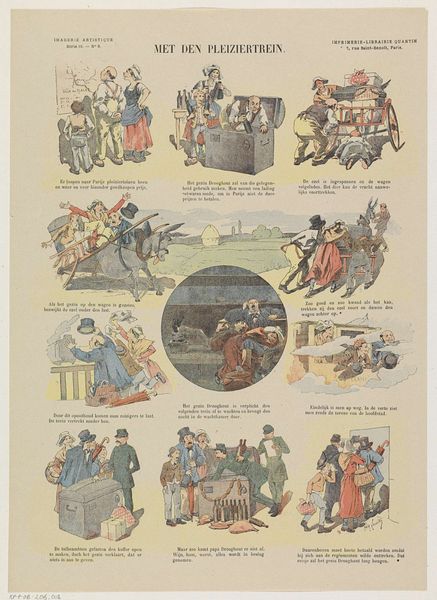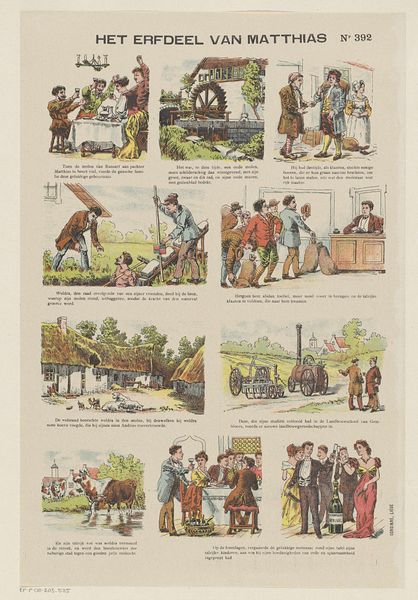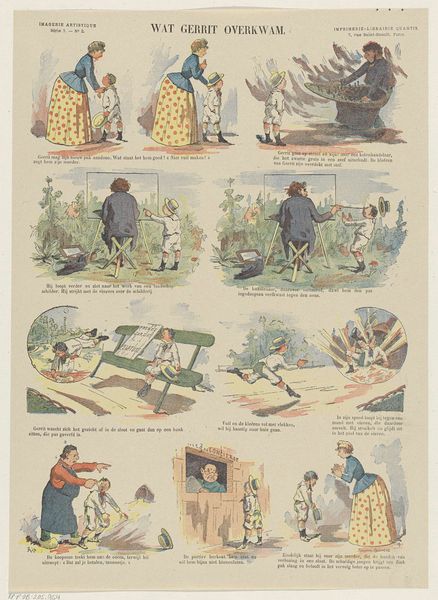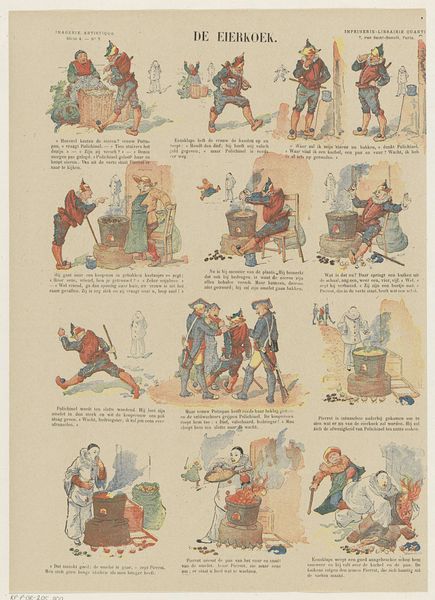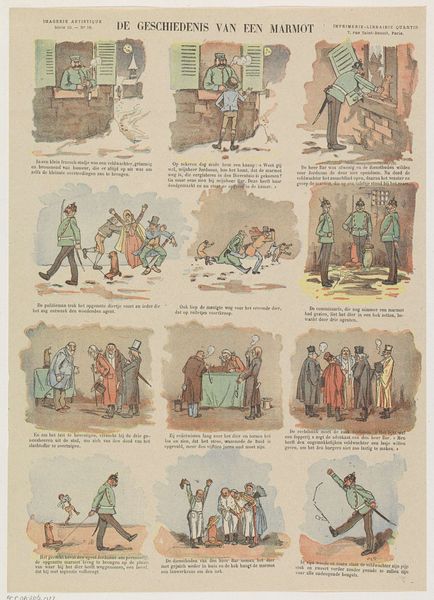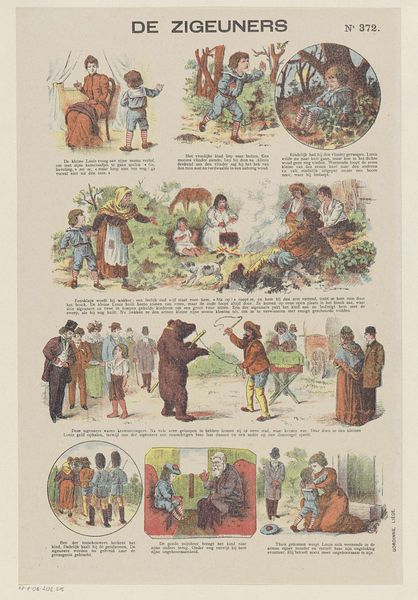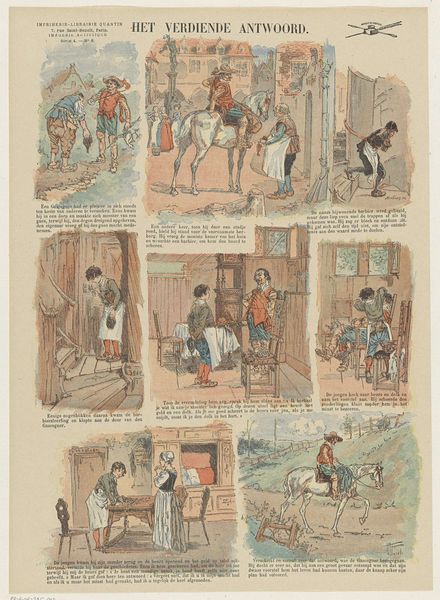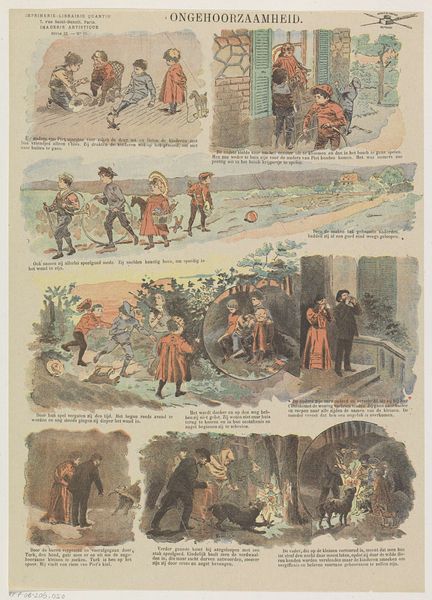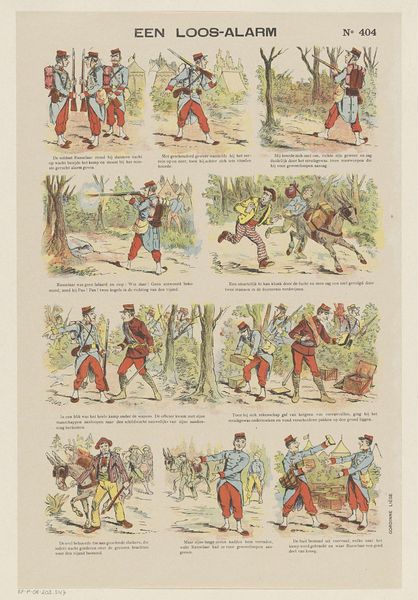
drawing, graphic-art, print, etching, ink, pen
#
drawing
#
graphic-art
#
narrative-art
# print
#
etching
#
ink
#
folk-art
#
comic
#
pen
#
watercolor
Dimensions: height 367 mm, width 266 mm
Copyright: Rijks Museum: Open Domain
Editor: We’re looking at "De twee konijnen," or "The Two Rabbits," a late 19th-century print by Jules Henault. It looks like a comic strip, maybe even something from a children's book, with these little vignettes. What catches your eye about this piece? Curator: Oh, the whimsy! It feels like peering into a child's mischievous daydream. It's got this fantastic, folksy charm—like a story told around a crackling fire. But there's also something a bit unsettling in the later panels with those sinister-looking figures, isn’t there? Are those rabbit-catchers, perhaps? Editor: Yes! Those silhouettes definitely take a darker turn. Curator: Right? And I’m curious about the technique. The artist mixes etching and watercolor, creating both precise lines and soft washes. It almost feels… contradictory. It makes me wonder, is this tension part of the story being told? Editor: It could be! So, the style reinforces the shift in tone from playful to, well, less playful. Do you think there’s some cultural context we should know about? Were rabbit stories particularly popular or meaningful then? Curator: That’s a fabulous question! Popular imagery always holds cultural clues, doesn't it? Perhaps rabbits held some specific symbolic weight during that time—innocence, vulnerability, or even just… good eating! These rabbit-snatchers lurking in shadows—their faces hidden by menacing hats—might touch upon Victorian class relations between town and countryside folk, with shadows recalling fear of poachers! What do *you* make of these inky-shadows? Editor: Interesting! It feels very theatrical and almost reminiscent of shadow-puppet plays. Thinking about how the artist tells a story without too much detail, gives more emphasis to expressions and interactions. Curator: Exactly. The story itself is pieced together so it unfolds bit by bit. The narrative feels like a rabbit warren, and each turn is full of surprise. Perhaps like the fleeting awareness we feel looking over our shoulders back in time itself... Editor: Definitely something to consider. Thanks for this new perspective!
Comments
No comments
Be the first to comment and join the conversation on the ultimate creative platform.
